Continuous Running Swimming Walking and Cross country Quizlet
You took your dog on an extra long walk, joined a golf game with a few friends, or went kayaking on your camping vacation and now the muscles you don't always work while running are feeling sore. But can doing these activities work for the cross-training you've got on the calendar or do you still need to incorporate weights and strength training for an arguably less exciting workout?
"What you have to decide is what purpose it is going to serve," said Kevin Vincent, M.D., Ph.D, the director of the University of Florida Running Medicine Clinic.
Cross-training should improve your cardio, strengthen your muscles, or help speed your recovery, according to Vincent. While it's true that many runners choose going to the gym and swimming, strength training, or using an elliptical or rowing machine, there are other ways of cross-training that can be beneficial to your running. Vincent and Darrin Bright, M.D., OhioHealth sports medicine doctor and ultramarathoner, break down the benefits of cross-training activities you can try.
More From Runner's World

→ Join Runner's World+ today for exclusive access to top expert-backed ways to nail your next PR!
What is cross-training?
When you run, you're constantly working your legs and arms, but to become a faster, stronger runner, that's where cross-training comes in. Cross-training can be high or low intensity exercise and is different than just tacking on more miles.
Typically, athletes want to do cross-training that compliments their main sport. For runners, this could be swimming, cycling, or even walking to help build endurance. Keep in mind, running is a unilateral movement—so it's important to incorporate unilateral exercises, such as lunges, into strength-training workouts. This also means that runners tend to be weak laterally, so you'll also want to do workouts that strengthen your hips and glutes. Engaging in cross-training will not only make you a better runner, it will also help you avoid injuries.
This content is imported from poll. You may be able to find the same content in another format, or you may be able to find more information, at their web site.
What are cross-training workouts runners can try?
Cross-training doesn't have to mean throwing weights around or struggling through a high-intensity workout. You can incorporate activities you already enjoy on your days off from running. Here are 14 different activities you can you try, and exactly how they'll benefit your running performance.
[ Download the All Out Studio App for some amazing at-home workouts!]
1. Rollerblading
How It Helps Your Running: Cardio, Recovery
"I look at it like you would be on an elliptical. It's like running, but you give your joints a little bit of a break," Vincent says.
Consider: There is potential for traumatic injuries, and depending on your intensity, it is not always aerobically challenging. And, be sure to wear the proper padding. And find a path where you won't be doing a lot of coasting.
2. Swimming
How It Helps Your Running: Cardio, Recovery
"It's going to work some of the same muscle groups and add in the upper body and the core. It's a good aerobic workout without the pounding forces on your legs. It's a way to get some more recovery," Bright says.
Consider: It sometimes causes upper-body injuries, especially if your form is off. Improper form may cause increased rotator cuff tendonitis, but overall it's a safe, low-impact way to cross-train if you're lucky enough to have access to a private pool.
3. Barre class
How It Helps Your Running: Flexibility, Strength
Consider: It is a high-intensity workout that could cause muscle strain or overtraining. You can do these workouts at home, but they may be difficult without proper equipment or in-person instruction. "If these workouts are combined with usual training schedules without incorporating proper recovery time, there may be a risk for overtraining," Bright says.
4. Kayaking
How It Helps Your Running: Strengthening, Recovery
"It gives you a mental break, and there's a lot of upper-body work," Vincent says. "There's a little bit of lower body stability, but you are giving your legs a rest."
Consider: It can have low aerobic intensity, especially if you paddle casually.
5. Golf
6. Walking Your Dog
How It Helps Your Running: Recovery
"You are utilizing the same muscle groups. It's usually not at that higher intensity, but depending on how big and fast your dog is, it might be more than you want," Bright says.
Consider: It has low aerobic intensity. "It'd probably be more of an active recovery day. I wouldn't substitute it for a tempo or interval," Bright says.
7. Yoga
How It Helps Your Running: Flexibility, Conditioning
"Benefits may be seen in hot yoga prior to running a race in warmer environments. It has been shown that acclimating to the heat can help to decrease your risk for heat injury and improve performance," Bright said.
Consider: You could strain a muscle from stretching too far. If you're new to yoga, check and see if a local yoga studio is offering beginner classes so the instructor can help you with your form.
8. Waterskiing or Wakeboarding
How It Helps Your Running: Strengthening
"It will help with lower body strength and will give you core strength. It will help with your balance as well," Vincent says.
Consider: It causes injuries and has low aerobic intensity. Plus, your legs are really working, which means you might not be feeling fresh and ready to run again the next day.
9. Tennis
How It Helps Your Running: Cardio
"It's very intense. You are conditioning. It's a very hard workout and allows you to stay in shape," Vincent says.
Consider: Your legs still take a beating, and quick lateral movements and pounding on your legs can cause injury. "If your foot catches or you plant wrong, you could get muscle strains, so calf and hamstring injuries. Tennis elbow is common among tennis players. Those are more those overuse type injuries. I primarily see acute muscles strains," Bright says.
10. Cross-Country Skiing
How It Helps Your Running: Cardio
"It's working similar muscle groups to running. There is high aerobic demand. It's a perfect sport that we could substitute," Bright says.
Consider: It triggers asthma."If you suffer from asthma or exercise-induced asthma, it has one of the highest triggers for asthma. It's bad in cold and dry environments, you'll be at risk for experiencing symptoms while doing that," Bright says.
11. Zumba
How It Helps Your Running: Cardio, Strengthening
"It's working some of those same muscle groups. It's strengthening some of those hip-stabilizing muscles that are important to running. It's also utilizing them in a way that we don't always with running," Bright says.
Consider: It has lower aerobic intensity, and it can cause overexertion of leg muscles. Some moves can put stress on your calves. You can check your local gym or YouTube for class videos to follow.
12. Downhill Skiing
How It Helps Your Running: Strengthening
"If you are doing a couple hours of it, it certainly does help with quad strength. When you are coming downhill, it will help with your posture and stability," Vincent says.
Consider: You may overexert your leg muscles and there is risk of injury. "The biggest one we see is ligament injuries primarily knee injuries, which can be pretty significant because of the forces involved. The one we see is an ACL tear and that ligament requires a surgical reconstruction," Bright says.
13. Stand-Up Paddle Boarding
How It Helps Your Running: Strengthening
"You do work your legs a lot, and it's tiring from a posture standpoint. It's not as much pounding as running is. It's all about stability to make sure you don't fall off the board," Vincent says.
Consider: It works your leg muscles hard. And, it's a tougher workout than people expect. You'll be sore the next day.
14. Cycling
How It Helps Your Running: Cardio, Recovery
"It works a lot of the same leg muscles, and biking is a way to substitute some of that pounding and still get a good aerobic workout," Bright says.
Consider: It has potential for injury, and you need to fit your bike like you fit your shoes.
"There are traumatic injuries, and there are a lot of bike crashes because of the speeds involved with biking. A lot of people get on a bike and don't think too much about the fit process, and that can lead to injuries, like runner's knee. Make sure you take the time to do a proper bike fit," Bright says.
Jordan Smith is a writer and editor with over 5 years of experience reporting on health and fitness news and trends. She is a published author, studying for her personal trainer certification, and over the past year became an unintentional Coronavirus expert. She has previously worked at Health, Inc., and 605 Magazine and was the editor-in-chief of her collegiate newspaper. Her love of all things outdoors came from growing up in the Black Hills of South Dakota.
This content is imported from OpenWeb. You may be able to find the same content in another format, or you may be able to find more information, at their web site.
Source: https://www.runnersworld.com/training/a20827090/16-cross-training-activities-to-try/
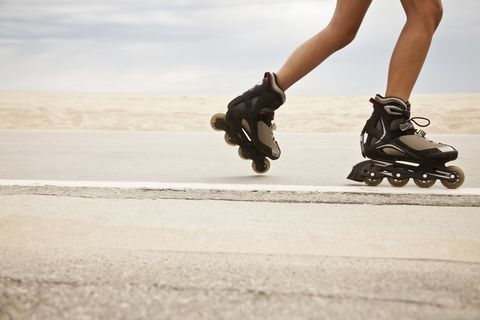
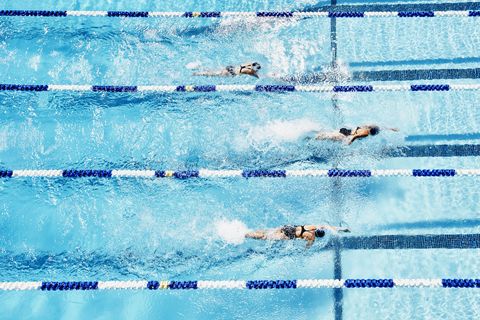
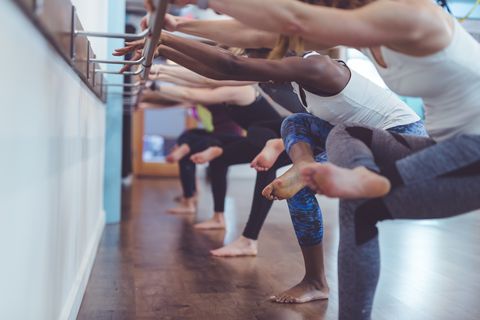





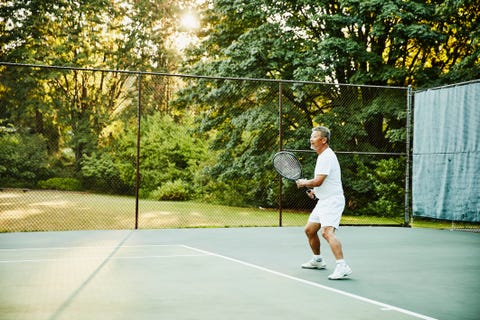

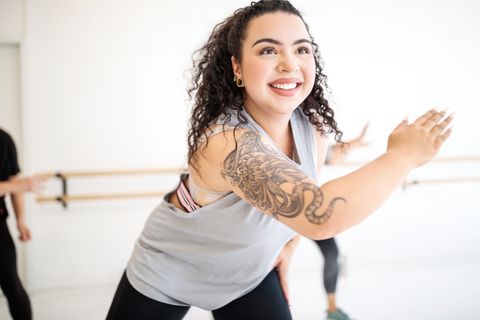



0 Response to "Continuous Running Swimming Walking and Cross country Quizlet"
Post a Comment